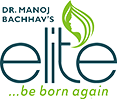Best Cosmetic Laser Surgery in Nashik
If you’re considering laser surgery for a cosmetic procedure you may find that reading about these procedures is like learning a foreign language. Let’s decode and translate some of this medical lingo so that you can understand exactly what is being spoken. Then let’s take a look at which lasers work best for different skin conditions.
Laser Treatment
The word laser is an acronym (an abbreviation which uses the first letter of each word in a description to create a term.) Laser (L-A-S-E-R) stands for light amplification by stimulated emission of radiation. In simpler terms, a laser is a single-wavelength (one color of light) source of high-energy light, which can be accurately focused to transmit that light onto a very small area.
Ablative vs. Nonablative Lasers
There are two basic types of lasers used for cosmetic purposes: ablative and nonablative. Ablative lasers actually vaporize the top layers of damaged skin, while non-ablative lasers work deeper in the skin without removing or otherwise damaging the top layers. For this reason, there is no real patient downtime associated with cosmetic procedures that employ solely nonablative laser technology.
How Lasers Work
Lasers are monochromatic (mono means one and chromo refers to color), which means that a given laser emits light of only one wavelength (or color) of light. Lasers work in cosmetic applications through a process called “selective photothermolysis.” When broken down, this very fancy word means that it modulates the frequency of light (photo) to produce heat (thermo) in the specific area of the corresponding thing you wish to destroy (lysis). To do this, the wavelength of the light beam must be in sync with the color of the target which is to be addressed, whether that be brown spots, unsightly red broken capillaries or some other undesirable skin condition.
Why So Many Different Types of Lasers?
The two basic types of lasers can be further broken down into many subcategories of laser types and into literally hundreds of variations and brand names which fit into these subclassifications.
The main differences between the types of lasers have to do with wavelength. In other words, different laser wavelengths (colors of light) target different skin issues. Therefore, a variety of lasers are needed to treat a variety of skin concerns. For this reason, a combination of several different lasers may be recommended by your surgeon to address all of the problems that you may have. An explanation of the differences between these different laser types could get very lengthy, technical and rather confusing, so we will focus here on what types of cosmetic issues are best treated by the various laser types.
Laser Types for Different Cosmetic Uses
- Fine Lines and Wrinkles: For treating lines and wrinkles, a combination of skin resurfacing and skin-tightening procedures can be used or both can be accomplished with a more aggressive ablative laser, such as a CO2 (carbon dioxide) laser or Erbium YAG. The CO2 laser is also commonly used for the removal of warts and skin tags and for cutting skin in laser-assisted surgery. Pulsed dye lasers have also shown some success, along with less aggressive nonlaser, light-based treatments, such as IPL and LED photo facials.
- Skin Tightening: Most cosmetic laser procedures provide at least some level of superficial tightening because they produce a controlled injury of the skin, which encourages increased collagen production. For more significant tightening results, however, CO2 lasers are the laser of choice. In addition, there has been much success using nonlaser, light-based treatments, such as Titan infrared devices and Thermage radio-frequency based systems.
- Pigmented Lesions: The most commonly used lasers for the treatment of pigmented lesions, such as sun spots, age spots, melasma and other forms of hyperpigmentation are the pulsed dye, Nd: YAG, and fractional (Fraxel) lasers, along with nonlaser, light-based treatments, such as IPL.
- Precancerous Lesions: Almost all surgeons agree that cancerous lesions should be removed via scalpel (with a knife during surgery) to ensure clear borders and complete removal. In addition to making sure a skin cancer has “clear margins,” this assures that there is a sample for a pathologist to look at to determine exactly what the lesion was. By removing precancerous growths, such as actinic keratoses, before they have a chance to become malignant (squamous cell skin cancers), though, lasers are now routinely being used as a preventative measure. Ablative lasers, such as the CO2 and erbium: YAG, is generally chosen to remove these lesions.
- Vascular Lesions: Vascular lesions include broken blood vessels on the face, unsightly spider veins on the legs, spider nevi, hemangiomas, and certain birthmarks such as port wine stains. For these types of skin irregularities, IPL is a common choice, as it is minimally invasive. Also popular for treating these lesions are the pulsed dye, Nd: YAG and diode lasers.
- Tattoos: The CO2 laser and Nd: YAG remains popular for tattoo removal, although some success can also be had with the use of IPL.
- Hair Removal: The success and safety of laser hair removal are highly dependent on the pigment present in both the skin and the hair of the patient being treated. For darker-skinned patients, the Nd: YAG and diode lasers are often the lasers of choice, and for lighter-skinned patients, IPL has proved effective.
- Acne and Acne Scars: For deeper acne scars, the CO2 laser remains the gold standard, although more recent developments such as the erbium: YAG, fractional laser and certain nonablative lasers have shown considerable success with superficial acne scarring. For the treatment of active acne, LED technology has proven to be quite effective.
